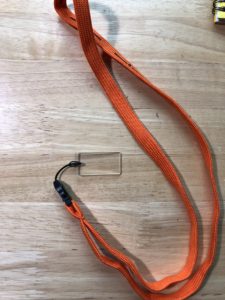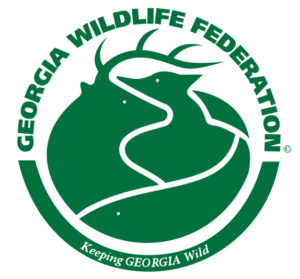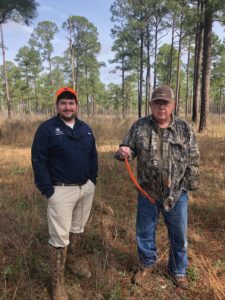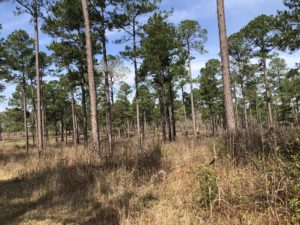
Photo 1: A 10 BAF rectangular cruising prism that GWF Private Lands Biologist Evan Wheeler keeps with him on all landowner site visits.
By: Evan Wheeler
Wedge prisms are used to estimate the basal area (total cross-sectional area of tree stems in a forest stand [usually presented in ft2/acre]) of a forest stand and are readily available to private landowners and managers for a cost of about $33-90.
Importance of Basal Area to Forest and Wildlife Habitat Management:
- Timber harvest planning: timber harvest commonly occurs when basal area reaches a specified threshold (depending on species and objectives). For example, the first thinning for a loblolly pine stand commonly occurs when basal area approaches 120 ft2/acre.
- Wildlife habitat management: Due to the influence of overstory tree stem densities and sizes on understory vegetation (related to space occupation and light interception), basal area ranges are sometimes recommended for species-specific management. For example, when managing for the mixed objectives of timber production and northern bobwhite habitat in the southeastern United States, a basal area range of 40–60 ft2/acre is generally recommended. This basal area range is critical to provide sufficient light and space availability for the proliferation of an herbaceous understory plant community that northern bobwhites require for forage production, nesting material and cover, and escape cover, while maintaining a sufficient number of trees to provide financial returns from timber harvest.
Photo 2: GWF Private Lands Biologist Evan Wheeler accompanies Mr. Chris Plott, Quail Ridge Plantation owner and land manager, as he prepares to use a wedge prism to check the basal area of a northern bobwhite focal area in a mature pine stand.
Photo 3: A northern bobwhite focal area in a mature pine stand on Quail Ridge Plantation in Stewart County, GA. Mr. Plott utilizes selective tree removal to maintain this stand at a basal area of around 50 ft2/acre. In addition to maintaining an appropriate overstory basal area, the frequent (i.e., every 2–3 years) application of prescribed fire is integral to maintaining an understory plant community dominated by grasses and forbs.
For more information on the influence of basal area on wildlife habitat quality, visit https://gwf.org/privatelands/ or contact GWF Private Lands Biologist Evan Wheeler (evan@gwf.org) to schedule an AT-NO-COST consultation.



Recent Comments